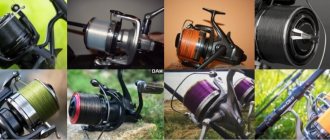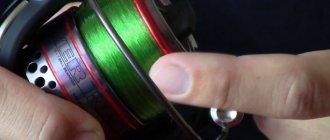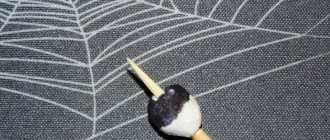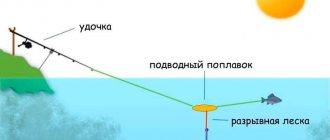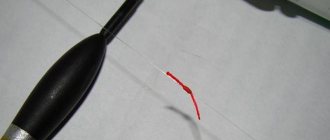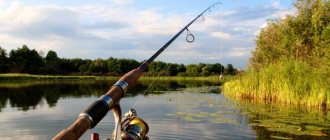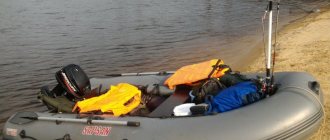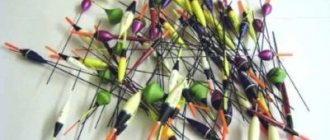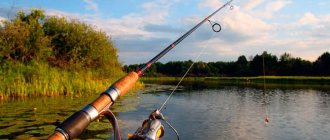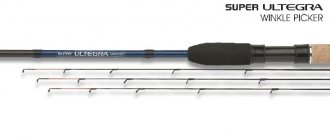Long-distance fishing with a float rod is always in demand among fishermen. After all, if you have the skills, the right choice of equipment and fishing location, there is a high probability of becoming the owner of a worthwhile fish trophy.
This fishing method allows you to use a fishing line several times longer than the length of the rod itself, and the use of modern equipment significantly simplifies not only the preparation and installation of gear, but also the entire fishing process.
Most gear designed for long distances consists of elements such as:
- rod;
- coil;
- fishing line;
- loading;
- swivels;
- stopper;
- leash with hook;
- float;
- other elements of gear.
The use of rods for fishing over long distances is appropriate when the fish is located far from the shore at depth or the shoreline of the reservoir is designed in such a way that casting and feeding from it is impossible.
What is the best rod and reel to use?
A high-quality rod for long-distance casting should have a length of 3.5 m - 4 m. A smaller rod is difficult to control over a long distance, and casting a light-weight bait is problematic. And longer rods have increased windage, making them inconvenient to hold and hook.
Often the rod is equipped with:
- cone-type reel seat;
- comfortable cork handle;
- 12-16 pass rings with high holders.
This number of guide rings ensures even distribution of the load, and also makes it possible to hold wet fishing line without coming into contact with the rod.
It must be remembered that a rod of this type, depending on the weight of the bait, is divided into 3 main types:
- light (if the weight of the bait is in the range of 5-20 g);
- medium (10-40 g);
- heavy (20-65 g).
Longer distances require rods to be more flexible and have a semi-parabolic action. This effect can be achieved using plug-type fishing rods, but not telescopic ones. The owner of the second option should avoid long-distance fishing.
When choosing a reel it will be correct to choose an open, inertia-free type. In addition, it must have:
- fishing line with a diameter of 0.2 mm;
- total timber capacity up to 200 m;
- 2 or more bearings;
- reliable clutch;
- gear ratio 1:4.5 or 1:7.
You can save on the spool and buy a regular one, but the line capacity should be no less than the specified one, and the winding profile should look like an inverted cone.
Middle segment (from 3,000 to 10,000 rubles)
Making a rating of carp rods in prices up to 10 thousand is a thankless task, because this is the most widely represented category. It is completely unrealistic to choose the best carp fishing rods for the top 3 without offending anyone, so please be understanding about the top three winners.
SHIMANO TRIBAL TX-1 12-300 (TX112300)
- plug
- test up to 120 g
- springs well
- casting accuracy
The thin, extra-heavy action blank, 3.65 m long, opens up the view. Despite its elegance, the fishing rod weighs a lot for its length. But it is durable due to the combination of carbon fiber and carbon fiber, has reinforced steel rings coated with aluminum and ensures precision casting. There is a case for transportation.
Salmo Diamond Carp 3.5 3041-360
- 7 rings with SiC coating
- convenient to transport (folded length 1.25 m)
- casting range
- good bend test, 3.5 lb
The particularly heavy action of this blank allows you to catch carp in deep rivers with powerful currents. The 3-arm, 3.6 m long rod becomes compact when transported and fits into a case. The downsides are the untreated handle and the metal cut of the reel holder.
Daiwa Regal Carp 11573-398
- weight 350 g
- easy to assemble
- powerful Fuji reel seat
- transport length 138 cm
A good blank with a length of 3.9 m is easy to assemble and easy to transport, because the folded length is only 1.38 m. The 3.5 lb test, coupled with the Fuji holder, suggests that the blank will cope with the jerks of a large river carp.
Line lubricant
07/22/2015 Author: Buerakov V.S.
In carp fishing, it is not always necessary to cast the tackle over the horizon, since the fish often wanders under the shore. However, the ability to fish at long distances is considered one of the main skills of modern carp anglers, which allows them to use all possible chances to catch fish. If the carp is located far from the shore, the fisherman must be able to deliver bait to it.
In this article we will talk about the techniques and equipment that are necessary for fishing at long distances. For different fishermen, with different goals, this distance varies from 50 to 200 m.
[THERE IS AN ANSWER] Which fishing rod is best for carp fishing
The most optimal for carp fishing is considered to be a rod 3.5-4 m long with a cast of 1-1.5 kg. To make long casts, the rod tip must work well, having a fast recovery speed. If you have a medium action rod, you can make long casts with it, but you will have to apply force more slowly (we will write about this below).
The number of rings and the distance between them play an important, if not the main role. If there are a lot of rings, there will be strong vibration and the casting distance will be reduced. If there is a drawback, loops form on the fishing line that sticks to the rod, which also reduces the distance.
Another problem is with the hinges. They can wrap around the legs of the guides and cause tangling or breakage of the line (with very powerful casting).
Due to their size, most carp reels can be used for long casting. When choosing a reel, pay attention to the maximum length of the line that can be accommodated, the weight and diameter of the spool. When the line comes off the reel, the gap between the remaining line and the side of the spool should be small, otherwise additional vibration will be created and the casting distance will decrease.
Also, the reel should be light, comfortable and durable.
Taking into account the conditions of the reservoir, the likelihood of snags, algae, etc., the main fishing line of the fishing rod must be strong and can withstand landing fish of the expected size. Usually use high-quality fishing line 5-8 kg. As an exception, fishing in places where the likelihood of hooks is minimal. In such cases, a fishing line with a tensile load of 4-5 kg will be sufficient.
Some carp anglers use braided line when casting long distances, due to its small diameter and high strength.
Line lubricant
To increase casting distance, a special lubricant is often applied to the fishing line. It reduces vibration and increases range. After several hours of the fishing line being in the water, it needs to be re-lubricated, since the lubricant is washed off in the water.
The shock leader is an important part of the equipment, especially when achieving maximum casting distance. Care must be taken to use systems that will increase the reliability of the equipment. Otherwise, the line may not withstand the tension and break. The optimal shock leader load ranges from 3.6 to 4.5 kg per 1 ounce of sinker weight. For example, to use a 3 oz (85 g) sinker, we would need a 10-13 kg shock leader.
To connect the shock leader to the main line, you can use a double grinder, gluing it for greater reliability.
The most important thing about a sinker is its weight and size. With a sinker that is too light, you will not create the necessary tension in the rod and will not be able to make a good long cast. If it is too heavy, you will lose casting power and may also break the fishing rod.
The size of the sinker is also important. Despite the good characteristics of a short and blunt sinker as a self-hook, it does not have the necessary aerodynamic properties. Therefore, such a load cannot be thrown far, unlike oblong-shaped sinkers.
Modern sinkers are either sliding or clip-on. We also need to talk about another important element - the method of attaching the sinker. In the case of a sliding sinker, when casting, the carabiner is pressed into the protrusion of the fasteners, and the equipment moves behind the sinker. At the same time, the protrusion of the sinker begins to deviate, increasing air resistance and reducing the distance. Therefore, this type of sinker is considered unsuitable. The same applies to other weights - clip-on ones.
The most optimal method of attaching a sinker is considered to be a “helicopter”. When casting, the sinker is the main object. The rig is attached behind the sinker, and it does not affect its flight path in any way. Using this fastening method, you need to make sure that the likelihood of snags on the equipment is minimal. In other words, it should be easy to remove and pass through the shock leader assembly without obstruction.
Check the tackle several times and make sure that it detaches freely from the sinker.
Casting technique and mechanics
With the help of a sinker, inertia is created. You move the rod forward and thereby force it to bend back. When a certain point is reached, the rod tip straightens and moves forward, causing a whip-like motion that helps push the load forward. It doesn't matter how stiff your carp rod is, as they all have imperfect action and can break if overexerted.
When moving the rod forward, you need to control the speed and strength; they should be slow. If you hear a whipping or whistling sound when casting, it means you are in a hurry.
If you cannot reach the required casting distance, then slow down the forward swing of the rod. Under no circumstances should you try to cast harder. Greater efforts only need to be exerted at extreme distances, but even this must be controlled. If you apply force at the wrong time or cast too sharply, the rod can easily break.
Safety laws
So, let’s repeat the basic laws of safety and reliability of your gear:
- The size of the sinker must match the fishing rod;
- The shock leader must match the size of the sinker;
- The main line must support the fish of expected weight;
- The rig or sinker should be easy to release from the shock leader.
The catalog of fishing rods presents a wide variety of models in length. Manufacturers indicate it in pounds and must be selected taking into account the consumer’s height, arm length, weight and physical fitness. For an average height of 175 cm, a modification with a length of 11-12 feet is suitable, which is equal to 3.5-3.7 meters.
What should the float be like?
The weight of the rod is the key to effective fishing. Therefore, the float for long-distance casting is somewhat different, both in appearance and design, from the standard type.
First of all, it must be long so that the fisherman can recognize the bite in a timely manner. That is why the vast majority of float models are made in the form of an arrow or an oblong torpedo. This shape helps the float enter the water at the correct angle.
In addition, the float must have:
- length 20-100 mm (thick part) and 20-50 cm (thin part);
- load capacity from 3 g;
- elongated keel made of plastic or metal;
- antenna, its thickness varies depending on the type.
It should be noted that the sliding float for long casting is equipped with a thin antenna and less carrying capacity.
The following materials can be used for the manufacture of these equipment elements:
- cattail stems;
- bals;
- plastic;
- metal wire;
- millet stalks.
The color scheme of the float should be as bright as possible so that it can be easily seen on a body of water even with a strong current. And aerodynamic performance will improve if the float is equipped with a stabilizer.
Rod
Sufficiently long rods are used for long casting. Short varieties will not allow you to deliver the bait to the right place.
A fishing rod for long casting can have a length of 3.6-4.5 m. It should be light but rigid. The construction of such gear is used quickly. Her knees only bend at the apex. It does not bend in the middle and at the base. This device will also allow you to cast bait very far.
Sports gear of the presented type often has a plug-in design. The telescopic system is practically not used for ultra-long casts.
A long-casting rod of the plug type usually consists of three legs. But for transportation it is better to purchase a product consisting of 4-6 parts. The handle can be cork (for expensive products) or made of porous rubber (cheap varieties).
A telescopic fishing rod is quite suitable for amateur fishing or for frequently changing fishing spots on a pond. Partial assembly of the telescopic form without removing the equipment will significantly save time when using the mobile fishing method.
Features of choosing a float
Preference should be given to sliding floats only when fishing is planned on a reservoir with little or no current. It is also worth considering the depth and features of the bottom of the reservoir. In low currents, such a float will provide:
- precise cutting;
- good visibility of bites;
- smooth flight and dive into the water at the right angle.
If you plan to fish in a body of water with a fast current, the right solution would be to install a fixed float. Its double-sided fixation facilitates clear recognition of bites even in strong currents and allows you to fish at depths of up to 8 m.
All types of floats are subject to loading up to the level of the yellow stripe. The passage ring attached to the body of this element of the tackle guarantees the smoothness of its movement. Therefore, when purchasing, you should carefully evaluate the quality of the material from which it is made.
As for the antenna, it would be better if it was removed. This will allow you to adjust the fishing distance by winding antennas of the appropriate sizes.
Preparation for installation: necessary equipment elements
Sinker
When using a fixed float, the entire weight of the load is collected in the float and closer to it. When attaching sliding elements of equipment with a load weight of more than 4 g, their location moves as close as possible to the leash.
With this loading method, the fisherman receives several advantages:
- during casting, this type of fastening allows you to easily overcome wind resistance;
- the large weight of the load makes it possible to quite quickly lower the hook with the appropriate bait to the depth or bottom area of the reservoir;
- diving the gear to depth increases the chances of catching a hefty fish trophy.
To properly load the float, you will need sinkers or, as fishermen are accustomed to calling them, “olives” weighing 3.5-8 g. And in order to be prepared for any changes in weather conditions, the right decision would be to make several options for equipment of different weights at once.
When choosing a sinker, it is better to choose a removable type, which has a rod in the center, using the ends of which and two sections of silicone tube to attach the olive to the fishing line. In addition to sinkers, it is worth stocking up on several clamp-type pellets. With their help, the sinker will be attached.
fishing line
The fishing line should be taken with a diameter of 0.12 mm. Of course, you can take a thicker one, but in this case the casting range and accuracy will suffer. Using a sliding type of installation, the load from the main fishing line is evenly distributed over all parts of the tackle.
Recommended reading: Details about choosing a spinning rod for jigging
You can’t do without a mounting line, although it in no way affects the operation of the gear, but it must have increased strength. Its diameter should be in the range of 0.14-0.18 mm, it directly depends on the weight of the sinker.
You will also need a soft line for the leash. The optimal diameter is 0.1-0.12 mm. An excellent option would be a specialized fishing line that can withstand extreme breaking loads.
It must be remembered that, without the skills, thin fishing lines for installation will cause constant tangling of the gear. At the same time, their use will not last long as they cannot withstand long-term loads with frequent casting. And they often become the main cause of gear breakage.
Shock leader
The shock leader performs a protective function, preventing damage and breakage of the gear. Therefore, the fishing line used to make it must be very strong.
The shock leader takes on the maximum load, both when casting and when retrieving large fish. Its diameter should be between 0.18 and 0.2 mm. When fishing at short distances, there is no need for it and 0.14-0.2 mm of fishing line is wound onto the reel spool.
Swivels
An integral element of mounting a float for long-distance casting is swivels of sizes from No. 20 to No. 24. They are attached in two places:
- between the mounting line and the leash;
- at the distance between the mounting line and the shock leader.
The use of small swivels gives the fisherman a number of advantages:
- this element is not confused;
- the swivel helps to avoid tangling the leash and the fishing line attached to it;
- does not significantly affect the loading as a whole.
Sliding elements
Other equally important sliding elements of installation include a snap hook with a Teflon or ceramic ring, which allows sliding along the fishing line.
If you have a standard carabiner with a swivel in your arsenal, then they will also work. But in this case, a damper (bead) is attached in front of the locking knot so that the knot does not slip through the eye of the swivel.
You also need to prepare hooks and elastic bands that will secure them. And it is better to reel the ready-made tackle onto pre-prepared reels.
How to make a float rod for long casting
Please note that without a fishing rod for casting a float long distance, you will not be able to use a similar float.
When you already have the necessary gear, you can throw the float over a fairly long distance. This distance greatly increases the chance that the fish will be hooked.
Of course, no matter what we say, such tackle cannot compete with a feeder float, but for novice anglers it will be just right.
How to make float tackle for long casting?
To make such gear, you need to purchase a medium or heavy reel, a telescopic or plug-in fishing rod, a float, fishing line and hooks appropriate for future fishing. You will also need a set of weights for loading.
Sliding float
Rod
A telescopic rod 3.6-4.5 m long with rings and a reel seat is quite enough.
Coil
The reel is installed as a standard spinning reel, size 2,000 - 3,000.
It is better to use a fishing line with a diameter of 0.12 mm, but you can increase the equipment to 0.22 mm. The thicker the line, the more difficult it is to cast the bait into the distance.
If you plan to catch large fish (carp, carp, etc.), then use a 0.3 mm fishing line.
Experienced fishermen use fishing line with a diameter of 0.08 mm.
The reel has a line reserve of 50-60 m.
Float
Depending on weather conditions and the expected bait casting distance, floats are selected according to shape and weight.
So, for long-distance casting, a float with additional weight inside is installed on the fishing rod.
An experienced fisherman will take floats of different shapes for fishing:
- Round. Convenient for casting short distances in calm weather.
- Oval. Designed for casting over medium distances in medium winds.
- Elongated. Used in strong gusts of wind when casting over long distances.
Loading
There are two options here:
- For calm water, the load consists of several pellets, at least 1-2. Closer to the leash, the weight is smaller; stepping back a little from the first, the main weight is secured.
- If the fishing is during the current, then install the two lightest pellets in front of the leash. The second one is a little heavier. Exactly in the middle of the distance from the float and the second weight, three weights are attached. Choose from 3.5 g to 8 g. It all depends on the strength of the current. Finally, three more weights are installed in the middle between the weights near the leash and the three weights that are closer to the float. Their weight should be greater than the weight of the pellets near the leash, but less than three pellets.
Blind float
Rod
The rod can be either telescopic or plug-in. Easy anyway. For depths up to 3 m, use a plug up to 4.5 m long.
Telescopic rods take 5 - 7 m.
Coil
The reel is similar to that used for a sliding float. This is an ordinary inertialess one.
We suggest you read: How to make tackle for crucian carp
Everything is the same as with a sliding float:
- 0.08 – 0.14 in a clean place.
- 0.14 – 0.18 in the place where fishing line snags are possible.
- up to 0.3 – if you are fishing for large fish.
Float
The float is attached from the weight no further than the length of the rod itself.
Loading
The load consists of one or two weights. Since fishing with such a float takes place in still water, the total weight of the weights is 2 - 2.5 g. If two weights are used, then the weight is distributed equally, or one weight is several times heavier than the second.
Long distance detection
Many experienced anglers say that this definition simply does not exist in the fishing lexicon, but we will still talk about it.
This definition can be considered conditional, because the distance will directly depend on the casting of the fishing rod along with the filled feeder.
For each case it can be completely different. Everything will depend on the following factors:
- The force applied to accomplish the throw.
- Weather conditions (strong wind).
- How heavily loaded will the feeder be?
In order to never focus on these factors and completely forget about measuring the distance of a cast fishing rod, we advise you to purchase an inertialess reel, the use of which will bring complete pleasure to fishing.
But if you don’t have a spinning reel, but still want to know how to determine the cast, we recommend watching a video of a long-distance float cast.
Tooling examples
Tackle with a sliding float will be effective when catching bream, carp, perch and other fish. We will give examples of equipment for different fishing situations (fishing location, type of fish, biting depth).
https://www..com/video/EfcW3IC6to0
Example No. 1
The fish is small, on average 500 grams. Fishing at a depth of 2 m with long casts. The current is weak or the water is standing.
The weight is placed near the float or in the sliding float itself. The weight of the float is 8 g, and the additional weight is 1 g.
Installation nuances
It is immediately worth noting that even before installation, for normal sliding of the float, you need to choose the correct length of the mounting line. But when all parts of the equipment are prepared, you can begin installation:
- You need to take a mounting line (0.16 mm) and attach the first swivel to it. To do this, a knot of 5 turns is formed. The fishing line must be wetted in advance. Next, 3 m of fishing line is measured and cut, through which 2 pieces of silicone tube are threaded.
- Following the first swivel, the second swivel is attached, using the same tying method.
- Now you need to fix the float. It is better to give preference to a carrying capacity of 6+8 g, where 6 is the load of the float itself, and 8 is the weight of the sinker that will be located on the fishing line. But experienced fishermen advise taking 7.5 g instead of 8 g of whole olive and adding the weight of the load with several small clamping pellets and securing them next to the lower swivel to which the leash will be attached.
- You need to clamp 2-3 pellets with a total weight of 0.5 g with mounting pliers and this way you will get a full working load of the float. Due to this, the fisherman will clearly see the bite “on the rise”.
- Next you need to secure the leash with the hook. The size of the hook directly depends on the type of trophy desired and the bait used accordingly. The average length of the leash should be 40 cm. Its length also depends on the fishing conditions and the size of the fish.
- When the canvas leash is fixed, the olive is placed in its place and firmly attached on both sides with silicone tubes and fishing line. In this case, the distance from the lower swivel to the sinker should be 10 cm greater than the length of the leash.
It is better to secure the hook to the reel, having first wound the entire fishing line with a load around it. And insert a hook with an elastic band into the upper swivel, with the help of which the tackle will be fixed.
Gear assembly
Now, in order to assemble all the gear together, you need to wind the main fishing line (0.12 mm) onto the spool and gradually thread one end of it through all the guide rings. Next, we attach a shock leader (0.18 mm) to it. The correct size of a piece of fishing line for this element of equipment is 2 lengths of the fishing rod used and about 5-6 more turns of fishing line on the spool.
The sliding part of the float is threaded through the end of the shock leader line. In this case, the carabiner is fixed with a piece of silicone tube. Having secured the upper swivel to one of the ends of the shock leader line, you need to carefully unwind the assembled part of the equipment from the reel.
Stopper knots
The final stage of assembling the tackle is tying the stop knots and then attaching the float. It is important to take into account that the fishing line for the stop knot must have the same diameter as the one to which it will be attached. Fastening knots of this type limits the movement of the float along the fishing line, and makes it possible to fix it at a certain depth.
The optimal number of knots is 2. One is not tightened too much, since it is responsible for lowering the float and moving it, but it must withstand more than one throw with the rod. And immediately after the fisherman finds the depth he needs, the first knot is overlapped by the second, the last one must be tightened tightly.
It is important to leave the ends of the fishing line at the knot at least 2 cm in size. If they are shorter, the fishing line will not be able to lie normally and will begin to tangle. In this case, you can use a sinker as a depth gauge. Therefore, it needs to be removed, while the cambrics are moved closer to the leash swivel, then put on and fixed again. Having set the approximate depth with a knot, you can try casting. And if the float antenna begins to be visible above the water surface, you can continue to adjust the equipment in search of the desired depth.
Recommended reading: What gear do you need for carp fishing?
But if the float is visible from the surface of the water with its entire working body, this is a guarantee that the olive has touched the bottom.
How to adjust the tackle for quality casting?
An acceptable distance for moving the stopper assembly on the fishing line is the length of the entire float. With the help of such manipulations of the movement of the unit, you can very quickly determine the unevenness of the bottom of the reservoir on which fishing is taking place.
When the fishing spot has been chosen, it is better to make another cast and pull the tackle clearly to the desired area of the reservoir, and make a 10-15 cm long mark on the line near the reel with a waterproof marker.
It would be correct to identify some landmark located on the other side. It could be anything: a bush or tree, a pillar. This will simplify the control of bait casting, since this increases the probability of the bait hitting the same place several times.
To avoid constant depth measurements after damage or tangling of the tackle, you need to use a white corrector to make a mark on the form on the opposite side of the locking unit, at which time the hook must be firmly attached to the handle of the rod itself.
For bottom fishing, you need to have half a leash with a nozzle at the bottom of the reservoir. This trick will help maintain the stability of the equipment in high currents or wind and will attract the interest of fish. In addition, all the elements of the load hang not on the surface, but in the water column, which will not frighten the fish.
The “contact” method of fishing often pleases fishermen with its results. The main feature of which is the fact that the descent on the equipment itself must be set as accurately as possible, and there was only one hook at the bottom of the reservoir. To do this, you need to remove the olive and attach a heavier depth gauge to the fishing line. Therefore, with an average load of 8 g, a 10 g depth gauge is installed. Now you can make a soft test cast and gradually reel in the line until the previously applied mark is near the spool.
It is worth considering that if the float is exactly half immersed in water, then the leash rests at that distance on the bottom of the reservoir. Now you can remove the depth gauge and secure the olive in the reverse position. All that remains is to move the locking knots a little so that only its antenna is visible from the water. The result of such actions will be quick and timely detection of bites. This trick is most effective when the reservoir is filled with small fish, and they try to grab a large bait, giving the fisherman false bite signals.
Some secrets of long casting
When fishing for long-distance casting, special attention must be paid to baits. And above all, this includes reliable fastening of the bait on the hook. Otherwise, during casting, the bait will simply fly off the hook and such fishing will be worthless. If we list more or less suitable baits for long-distance casting, then these first of all include maggots, bloodworms, dung or earthworms, steamed wheat, peas and similar baits.
If there is a need to bait fish, then you need to throw it in the same place so that if there is a current, the float passes through this place. Therefore, you should not forget the place of bait. But to do this, you need to clearly fix the line so that when casting, it falls exactly at or near the place of bait.
Performing long-distance casting
In general, I must say that at first glance, catching fish with a long cast is an easy task. Although this is not at all true. At first, beginners need to have not one, but 2 fishing rods for long casting. The fact is that without habit, you can easily tangle the gear on your fishing rod while casting. Therefore, in order not to break “large” firewood, such a fishing rod must be put aside and use a second one. And when you calm down a little or have more time, you can start untangling the gear.
So, where should you start when you come fishing? First you need to disassemble the fishing rod and attach the reel to it, if this has not been done previously. You need to tie a slip knot on the fishing line. If you are already familiar with the place for fishing, then it is best to knit such a knot in advance, so to speak, in a calm environment.
When the equipment is ready, you need to try throwing the fishing rod to a pre-designated place without a nozzle. To make the cast accurate, it is advisable to mark landmarks at the opposite end of the reservoir so that the eye has something to “catch onto” during the cast. When all the casts are in the same line, you can gradually increase the casting distance. But that's not all. After all, you need to be able to make sure that the gear falls in a predetermined place.
Before casting, you should try to set the optimal length of the line overhang. Line droop directly depends on the length of the fishing rod and the individual qualities of the fisherman. But in any case, the overhang should not exceed 1-1.2 meters. It must be said that you can throw gear as far as possible without any problems. But as for accurately hitting the same point, which, figuratively speaking, is a circle with a diameter of 2-3 meters, this is very difficult to achieve at first. That. In order for the cast to be more or less accurate, you need to practice and practice. And more than once.
Techniques for successful feeding
When starting bait, you need to immediately prepare a slingshot that will accurately deliver small lumps of the mixture to the fishing destination. During the first feeding, you need to use up the bulk of the prepared mixture. What remains is used as an astringent for chopped worms, maggots or bloodworms.
Each slingshot has its own maximum casting distance. Therefore, fishermen divide them into ranks:
- short (up to 30 m);
- medium (30-50 m);
- long-range (50 m or more).
When casting, do not forget about the marks on the fishing lines and the landmark on the opposite bank of the reservoir. The float should be clearly opposite it. The correct direction and casting of bait to the fishing point makes it possible to practice with the bait.
At the bottom of a reservoir with a weak current, a whole strip of bait is formed, directed downstream. With a fast current, it will be distributed over the entire nearby area, and will follow the current without stopping.
If a fisherman has an English fishing rod in his arsenal, then a prerequisite for effective fishing will be mastering the casting technique, which can be mastered with a little practice.
Secrets of casting technique
Knowing some of the secrets of his technique will help you make a quality cast. Among them:
- Casting a fishing rod with a fixed float must be strong and fast so that the entire load of the jerk falls on the float.
- The classic type of casting is ideal with a sliding float. When the rod is pulled back with smooth movements and when the sinker reaches the top point of the rod, a cast is made.
- To ensure that the equipment does not get tangled and lies flat on the water surface, before it reaches the water, you need to slow down the line from the spool.
- A float equipped with a stabilizer will ensure the accuracy of the throw and help determine the bite on the rise. Its effectiveness is especially noticeable in the scorching sun and reflections of water.
- You can quickly bring the tackle into working position if, after throwing, you immerse the tip in the water and, after reeling in the fishing line, sharply pull it out of the water.
- The load will be distributed evenly over the entire rod if the equipment is immersed in water immediately before casting. At the same time, you need to make sure that there are no tangles or knots on the fishing line. Next, the float is brought to the upper passage ring, the rod is smoothly retracted back and a soft cast is performed.
And in order to avoid confusion and breakage of equipment parts during transportation, they must be correctly positioned and packaged.
A good solution would be to buy a specialized case where you can compactly place the reel separately from the spool. A more economical option would be to use a reel.
Proper installation of the sliding rod rig for long casting will speed up the process of recognizing the features of the bottom of the reservoir, and significantly increase the chances of catching a decent fish trophy.
Do-it-yourself long-casting rod - About fishing
No matter how good an ordinary fishing rod is for fishing, very often there are moments when fishing when it is not able to help.
As a rule, this applies to places on reservoirs where you need to cast a fishing rod as far as possible, or during the fishing process gradually remove the fishing line from a regular fishing rod, and this is not always convenient or possible.
Therefore, life and fishing practice have shown that an ordinary fishing rod is poorly suited for this. If it fits at all. Therefore, in this situation there is only one way out - a fishing rod for long casting.
At the moment, there are 2 types of such fishing rods: a fishing rod with a sliding float and a fishing rod with a firmly fixed float. In general, despite all the similarity of such a fishing rod from a regular one, it has its own differences, which not everyone can identify at first glance.
Spinning rods for long casting
But this is, so to speak, a prelude... But in general, what does a long-casting fishing rod look like? In principle, there is nothing unusual in her appearance. The fishing rod is a regular “telescope”, the length of which when disassembled reaches 3-5 meters.
If the length of the rod is too short, then there is no doubt that a good cast will simply not work. In this case, a long rod turns out to be more productive in terms of casting quality, although it also has its drawbacks in this regard.
After all, swinging such rods all day while fishing is not an easy task.
It follows from this that the rod should be as light as possible, with a rigid action. Its tip should be flexible. If all these conditions are met when purchasing a long-casting rod, then if you have a light bait on the hook, the cast can be performed very accurately.
If the bait is as light as possible, and you need to cast it over a very long distance, then a rod with a parabolic or semi-parabolic action will help you perform such a cast. True, plug rods are best suited for this, not “telescopes”.
A regular spinning rod performs quite well for performing such a cast. This must also be taken into account when choosing and equipping a fishing rod.
Parabolic action rod
What should the coil be like?
What kind of reels should be for long casting? In any case, there is only one answer - only inertia-free. All other types of coils can be shoved far away.
Of course, you won’t need a very large reel for such a rod, so the best option would be a small or medium-sized reel.
True, if you want to purchase a cheap version of such a reel, experienced fishermen do not recommend doing this. For, as you know, the miser pays twice.
Inertia-free reels for fishing rods for long casting
An inertia-free reel must have 3-4 bearings, which must be installed in the handle and in the line layer roller.
As for the line layer, it must be made of high-quality and hard alloy, which is coated with titanium nitride for greater strength. Equally important is the presence of a friction brake.
If you want to catch small or medium-sized fish, then a reel with a front-mounted drag will do.
But if you are fishing for larger fish, which can make sharp jerks to the sides when fishing, it is advisable to install a reel with front and rear friction brakes.
That. The average diameter of the coil should be within 40 mm. It is desirable that the coil be of an open type. In principle, closed-type “inertia-free” fishing rods can also be suitable, but in this case, during the casting process, the fishing line begins to rub against the protective casing, thereby reducing the flight range.
In general, some fishermen advise using only a small reel. The fact is that for fishing with a float rod, a thinner fishing line is used than for fishing with a spinning rod.
True, you have to reel it in a lot, and if such a fishing line gets wet, then it is laid loosely, which subsequently leads to the formation of knots and “lambs” on it.

